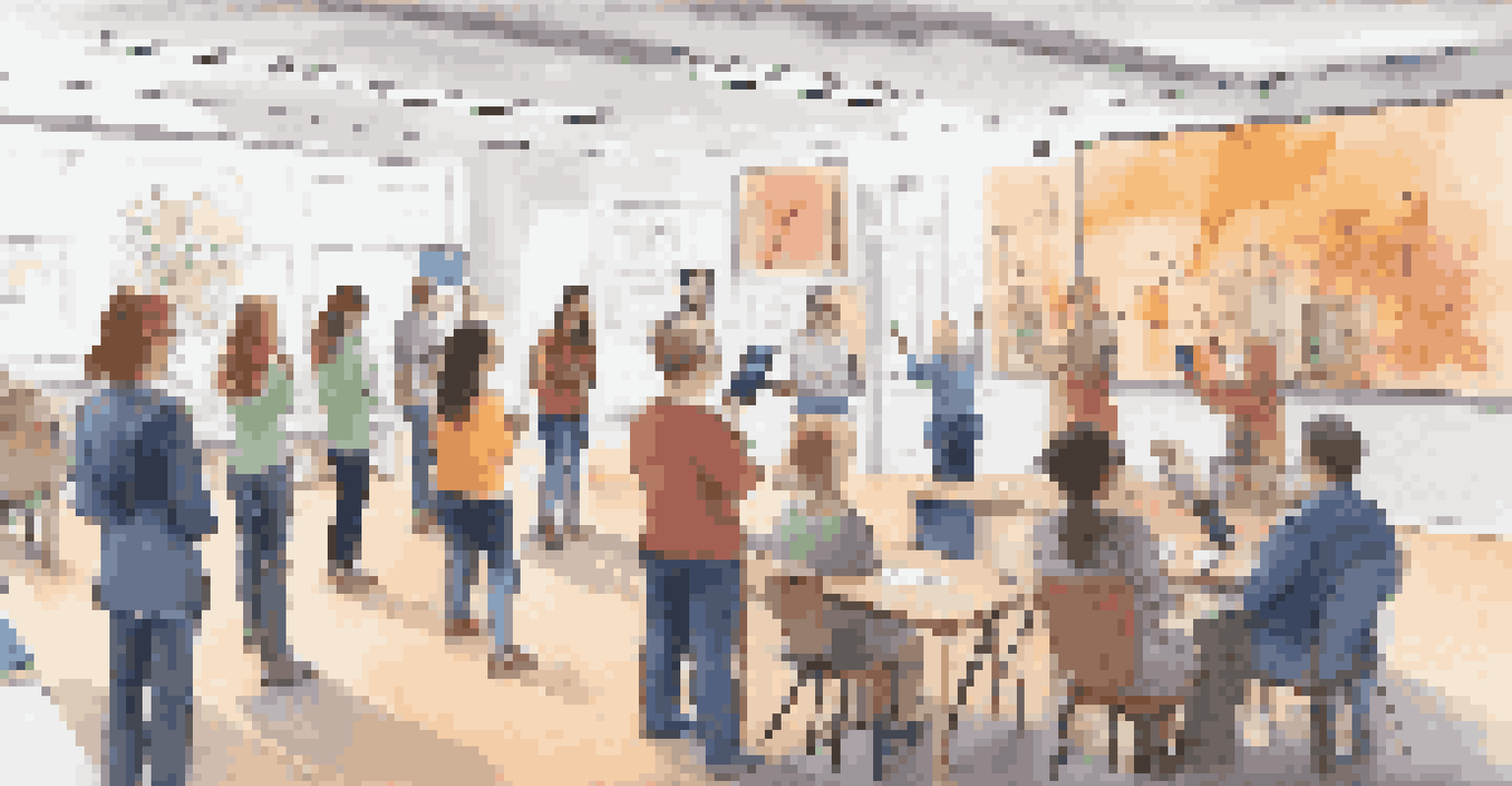Creating Inclusive Learning Environments with AR

Understanding Inclusive Learning Environments
Inclusive learning environments are those that accommodate diverse learners, ensuring that everyone has equal access to education. This concept goes beyond just physical accessibility; it includes emotional, social, and cognitive dimensions as well. By recognizing the unique needs of each student, educators can create a space where all feel valued and engaged.
Inclusion is not a matter of political correctness. It is the key to growth.
The importance of inclusion cannot be overstated. Students who feel included are more likely to participate actively, leading to improved learning outcomes. This sense of belonging is especially critical for individuals with disabilities, language barriers, or different cultural backgrounds, as they often face additional challenges in traditional classroom settings.
Incorporating innovative technologies, like Augmented Reality (AR), can significantly enhance these inclusive environments. AR offers immersive experiences that cater to various learning styles and abilities, making education more accessible and engaging for all students.
The Role of Augmented Reality in Education
Augmented Reality (AR) merges real-world environments with digital elements, creating interactive learning experiences. By overlaying information and visuals onto the physical world, AR can make abstract concepts more tangible and easier to grasp. Imagine a biology lesson where students can see a 3D model of a cell right on their desks, enhancing understanding through visual representation.

One of the key benefits of AR in education is its ability to cater to various learning preferences. Some students learn better through visual aids, while others may benefit from hands-on experiences. AR can bridge these gaps by providing multisensory learning opportunities that engage students in different ways.
Inclusive Learning Benefits All
Creating inclusive learning environments ensures that diverse learners feel valued and engaged, leading to improved educational outcomes.
Moreover, AR can facilitate personalized learning by allowing students to progress at their own pace. For instance, a student struggling with a particular concept can revisit the AR material as often as needed, fostering a sense of ownership over their learning journey.
Fostering Engagement Through Interactive Learning
Engagement is vital in any learning environment, and AR has a unique ability to captivate students' attention. When students interact with digital content in real time, their curiosity is piqued, making learning feel more like an adventure. This heightened engagement can lead to deeper understanding and retention of information.
The future belongs to those who believe in the beauty of their dreams.
For example, consider a history lesson where students can explore a virtual reconstruction of an ancient civilization. Instead of passively listening to a lecture, students actively participate by navigating through the AR environment, discovering artifacts, and learning about daily life in that era. This interactive approach not only makes learning enjoyable but also encourages critical thinking.
Additionally, AR can promote collaboration among students, as they often work together to solve problems or complete tasks in augmented spaces. This collaborative spirit fosters social skills and helps create a sense of community within the classroom, further enhancing the inclusiveness of the learning environment.
Addressing Diverse Learning Needs with AR
Every student has unique learning needs, and AR can help address these differences effectively. For students with learning disabilities, AR can offer tailored experiences that simplify complex information. For instance, visual learners may benefit from color-coded overlays that highlight key concepts, while auditory learners can access narrated explanations.
Moreover, AR can provide scaffolding for students who require extra support. By breaking down information into manageable chunks and presenting it in engaging formats, AR empowers learners to tackle challenging subjects at their own pace. This personalized approach is crucial in creating an inclusive educational atmosphere.
AR Enhances Learning Engagement
Augmented Reality (AR) captivates students' attention and fosters deeper understanding by providing interactive and multisensory learning experiences.
Teachers can also utilize AR tools to assess students' understanding in real time. By observing how students interact with AR content, educators can identify areas where individuals may struggle and adjust their teaching strategies accordingly. This responsiveness is key to fostering an inclusive learning environment.
Building Cultural Awareness Through AR
Cultural awareness is an essential aspect of inclusive education, and AR can play a significant role in promoting it. By incorporating diverse perspectives and multicultural content into AR experiences, educators can help students appreciate the richness of various traditions and histories. For example, students may explore different cultural festivals through immersive AR simulations.
Such experiences not only build empathy but also encourage students to celebrate diversity within their own classrooms. When students see their own cultures represented in the learning material, they feel acknowledged and valued. This recognition creates a supportive environment where students are more likely to engage and contribute.
Furthermore, AR can facilitate cross-cultural collaborations, allowing students from different backgrounds to work together on projects. This shared experience fosters understanding and respect, contributing to a more inclusive and harmonious learning environment.
Training Educators to Use AR Effectively
To fully harness the potential of AR in creating inclusive learning environments, it's essential to provide educators with proper training. Teachers need to understand how to integrate AR tools into their curricula effectively. This training should encompass not only the technical aspects of using AR technology but also the pedagogical strategies for fostering inclusivity.
Professional development programs can equip educators with the skills and confidence to implement AR in their classrooms. Workshops, webinars, and peer collaboration can all serve as platforms for sharing best practices and learning from one another’s experiences. This collective knowledge can lead to more innovative and inclusive teaching methods.
Cultural Awareness Through AR
AR promotes cultural awareness by incorporating diverse perspectives, helping students appreciate various traditions and fostering empathy in the classroom.
Ultimately, when educators feel empowered to use AR creatively, they can tailor their approaches to meet the diverse needs of their students, ensuring that no one is left behind in the learning process.
The Future of Inclusive Learning with AR Technology
As technology continues to evolve, the future of inclusive learning environments will likely be shaped by advancements in AR. We can expect even more interactive and immersive experiences that cater to a diverse range of learning styles and needs. With ongoing research and development, AR tools will become more intuitive and accessible for both educators and students.
Moreover, the integration of AR with other emerging technologies, like artificial intelligence, could further personalize learning experiences. Imagine an AR application that adapts content based on a student's progress and preferences, providing real-time feedback and support tailored to their unique learning journey.

In this way, AR holds immense potential to transform education, making it more inclusive and engaging for all students. By prioritizing inclusivity in learning environments, we can create a future where every learner has the opportunity to thrive.